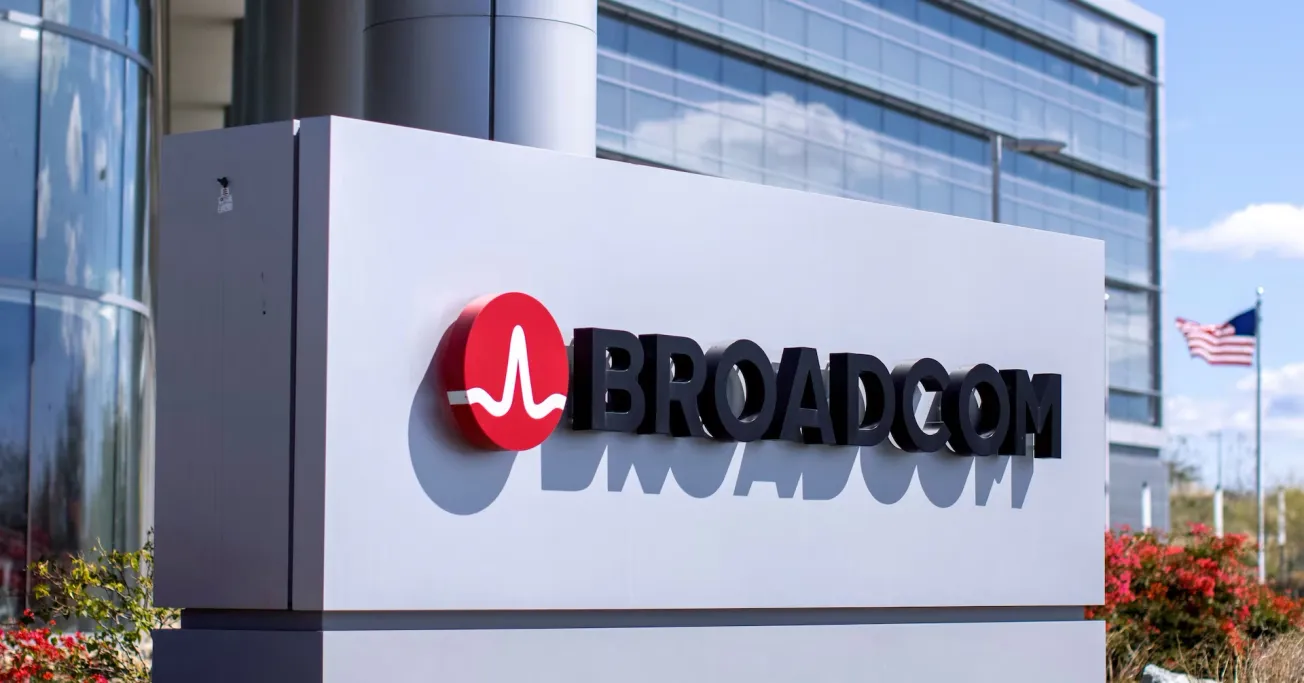Table of Contents
Broadcom unveiled its most powerful networking chip yet, delivering unprecedented 102.4 Tbps switching capacity that directly challenges Nvidia's grip on AI infrastructure markets.
Key Takeaways
- Tomahawk 6 delivers 102.4 terabits per second switching capacity, double any current Ethernet competitor
- Designed to support AI clusters exceeding one million accelerator chips in single deployments
- Built on 3-nanometer TSMC manufacturing process with advanced chiplet technology architecture
- Features Cognitive Routing 2.0 for intelligent traffic management and congestion detection
- Supports co-packaged optics integration for reduced power consumption and hardware costs
- Industry partners report unprecedented customer demand for large-scale AI deployments
- Ethernet technology gaining ground against Nvidia's InfiniBand in major hyperscaler designs
Breaking the 100 Tbps Barrier
The semiconductor industry reached a significant milestone this week when Broadcom announced it began shipping the Tomahawk 6 switch series, delivering what the company calls the world's first 102.4 terabits per second switching capacity in a single chip. This represents more than just an incremental improvement—it's double the bandwidth of any Ethernet switch currently available on the market.
The timing couldn't be more critical. As artificial intelligence workloads explode across data centers worldwide, network infrastructure has become the bottleneck preventing even larger AI deployments. AI clusters are scaling from tens to thousands of accelerators, turning the network into a critical bottleneck, according to Bloomberg Intelligence analyst Kunjan Sobhani.
Ram Velaga, Broadcom's senior vice president and general manager of the Core Switching Group, emphasized the transformative nature of this release. "Tomahawk 6 is not just an upgrade—it's a breakthrough," he explained. "It marks a turning point in AI infrastructure design, combining the highest bandwidth, power efficiency, and adaptive routing features for scale-up and scale-out networks into one platform."
Engineering Innovation at 3 Nanometers
Behind the impressive performance numbers lies sophisticated engineering. The Tomahawk 6 chips are manufactured at a 3-nanometer scale by Taiwan Semiconductor Manufacturing, representing a significant advancement from the previous Tomahawk 5's 5-nanometer process. This manufacturing precision, combined with chiplet technology, roughly doubles the silicon area of previous designs.
The chip introduces what Broadcom terms "Cognitive Routing 2.0," a sophisticated traffic management system that detects when a network link is congested and reroutes data to other connections, which helps avoid performance bottlenecks. This isn't just passive monitoring—the system actively collects performance data and makes real-time adjustments to optimize network flow.
Perhaps most significantly, the Tomahawk 6 supports co-packaged optics, a technology that integrates transceivers directly into the switch processor. This integration delivers full system-level power efficiency and cost savings, addressing two critical concerns for massive AI deployments: energy consumption and total cost of ownership.
The chip comes in multiple configurations, including a groundbreaking option for 1,024 100G SerDes on a single chip, enabling customers to deploy AI clusters with extended copper reach and more efficient use of processors and optics.
The Ethernet vs. InfiniBand Battle
This launch intensifies the ongoing technological war between Broadcom's Ethernet-based approach and Nvidia's InfiniBand technology for connecting AI processors. The stakes couldn't be higher—networking represents a critical component in the multi-billion-dollar AI infrastructure market.
Broadcom not only faces competition from Nvidia's Quantum-X InfiniBand switches, but also its Spectrum-X family of Ethernet kit, which analysts project could rival major networking vendors' revenues. However, the competitive landscape appears to be shifting. Recent analysis suggests that Ethernet has surpassed InfiniBand's market share as of this year, according to Dell'Oro Group estimates.
This shift represents more than just market dynamics—it reflects fundamental differences in architectural philosophy. Broadcom emphasizes open standards and compatibility with existing infrastructure, while Nvidia has built custom networking solutions around its dominant position in AI chips. By breaking the 100Tbps barrier and unifying scale-up and scale-out Ethernet, Broadcom's Tomahawk 6 gives hyperscalers an open, standards-based fabric—free of proprietary lock-in.
The practical implications are substantial. Seven of the largest eight AI clusters in deployment today use Broadcom Ethernet solutions, according to CEO Hock Tan's recent earnings call comments. Looking ahead, the company expects all mega-scale GPU deployments to transition to Ethernet within the next year.
Industry Response and Market Implications
The announcement generated immediate enthusiasm from major industry players. Arista Networks praised the chip's "low-power, high-radix, 1.6-Tbps port speeds, and advanced packet processing capabilities" through its general manager of cloud titans and AI, Hardev Singh.
Customer response has been equally strong. Velaga described demand from customers and partners as "unprecedented," with multiple deployments planned involving more than 100,000 accelerator chips. The scale of these deployments is staggering—the company envisions systems approaching one million processors housed within single physical buildings.
The accelerated timeline also signals market urgency. Normally, it takes about two years from when Broadcom starts "shipping" chips to integrators to when the first appliances actually hit the market. This time, however, the first Tomahawk 6-based switches could appear as early as this summer, with volume production ramping in the first half of next year.
From a practical standpoint, the bandwidth doubling means fewer networking switches are required to accomplish the same tasks, contributing to lower power consumption and enhanced reliability. This efficiency gain becomes crucial as AI deployments scale to unprecedented sizes.
The Tomahawk 6 represents more than technological advancement—it signals a potential shift in how the industry approaches AI infrastructure scaling. With its combination of raw performance, intelligent routing, and open standards compliance, Broadcom has positioned itself as a formidable challenger to Nvidia's networking dominance just as the AI market reaches critical mass.








